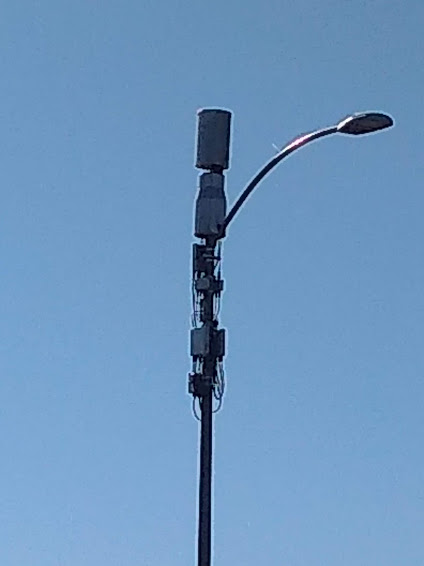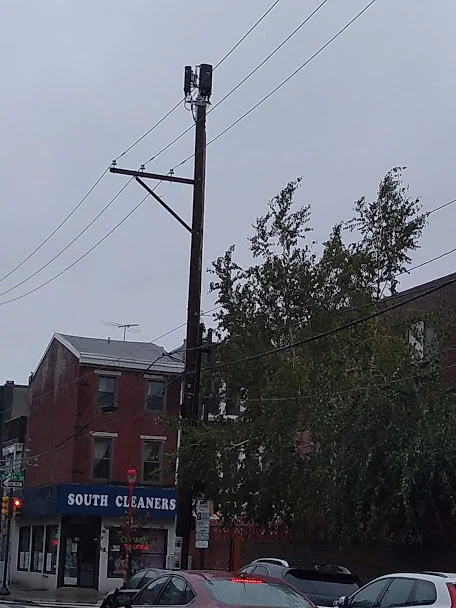5G Promises, Impacts, and Solutions
 5G: The What, Why, and How
5G: The What, Why, and How
Wireless telecommunications networks interconnect the nation's machines and systems, fuel national economic growth, and allow millions of people to communicate. To enable the high speed, low latency broadband services needed for today's wireless networks, telecommunications carriers are deploying the fifth generation (5G) of wireless services.
This 5G network is expected to provide technological and economic benefits to consumers, businesses and municipalities. Critical infrastructure including utilities, hospitals, schools, transportation systems and first responders will be profoundly impacted by the new world of 5G.
5G is forecasted to create an estimated three million new jobs and pump $500 billion into the economy.
Much of the 5G network will be deployed using low level small cell antenna systems which provide wireless signal coverage over a range of less than one mile. Small cell equipment, due to its small size, can be attached to utility structures such as stand-alone streetlights, traffic signals, and utility distribution poles.
Regulatory Requirements Driving Broadband Growth and Impacting Utility Pole Owners
Utility distribution poles are the backbone of the nation’s critical infrastructure and provide the pathway for the electric and telecommunications lines and equipment that power and connect the nations homes and businesses. The Federal Communications Commission (FCC) has enacted regulations requiring that investor-owned utilities and incumbent telephone local exchange carriers provide non-discriminatory access to the poles, conduits, and right of ways that are owned or controlled by the utility.
In many states, the Public Utilities Commission (PUC) has reverse pre-empted the FCC and certified that the state will assume responsibility for the pole attachment process. Those “certified” states tend to follow the FCC provisions.
 The Impact to Pole Owners
The Impact to Pole Owners
The FCC has implemented two new orders to accelerate broadband deployment that will impact pole owners in the upcoming months. The “Accelerating Wireline” (one-touch make-ready) and “Accelerating Wireless” (small cell) orders are forecasted to result in an increase in volume of attachment requests and may require that some utilities change processes, add more resources, and train personnel in new skill sets to remain in compliance with current rules and regulations. Pole owners will need:
- A more organized and transparent way to process incoming attachment applications and to track and share the status of applications so they can plan next steps
- Additional field resources to perform field surveys in a timely manner to identify potential make-ready work
- Safe and effective approaches for measuring available clearances in the power space and communication space to ensure NESC compliance and adhere to construction standards
- And accurate methods for capturing attachment heights as inputs to pole loading software
- Additional engineering resources to review the attachment application and electric connection to power the new equipment
The Osmose Solution
An organized, efficient approach to pole attachment management will ensure that pole owners meet the increased activity expected with the new pole attachment rules. Osmose implements a pole attachment management solution using skilled personnel and proven technology.
Step 1: Review Existing Agreements- The approach begins with a review of existing pole attachment agreements to determine compliance with the new regulations, responsibility for payment, and cost-recovery mechanisms for performing an audit.
Step 2: Establish Accurate Baseline of Current Attachments (via Cost-Recoverable Audit)- If it's been over five years since your last audit, an audit of attachments should be performed by qualified inspectors who understand both electric telecommunications infrastructure and NESC requirements. Osmose skilled technicians are equipped with the best field tools available to collect and analyze attachments, pole condition, and to assess clearances (measured), and capture images to support next steps. Osmose uses highly accurate Digital Measuring Technology to collect measurements and performs detailed clearance and load assessments using Osmose industry-leading O-Calc® Pro software. The results can then be posted to the Osmose 360 Joint Use portal, a robust, map-based, online portal that allows participants in the audit to review and interact with the data relating to their attachments. The Osmose sophisticated data collection process delivers a faster, more accurate audit which allows the utility to assess the state of their pole plant and manage their risk exposure effectively.
Step 3: Addressing Issues Resulting from the Audit through Remediation- One item discovered in many attachment audits are replaced poles remaining in the right-of-way after the pole owner utility has transferred to a new pole. These "double wood" or "buddy poles" are a sore spot with regulators and represent an unnecessary safety risk for the pole owner utility that should be addressed urgently. NESC/GO95 clearance violations, caused by third party attachments are another issue. Remediation of these issues involves communication with third party stakeholders (ticket management), as well as resources to coordinate, design, schedule and review that the appropriate fixes have been performed. Osmose national corps of "boots on the ground" technicians and scores of engineers and project coordinators can expedite resolution of this unsightly hazard by performing make-ready engineering, pole loading analysis, and coordinating the movement of attachments to ensure transfers to new poles are performed expeditiously and safely.
Step 4: Keeping Your Pole Plant Data Pristine (Turnkey Pole Application Management)- Following the above steps, new pole attachment applications must be managed effectively to ensure the safe and timely provisioning of attachment requests and compliance with regulations. Budgeting for and staffing to deal with the peaks and valleys of managing incoming applications in a timely manner is one of the biggest challenges and risks to your poles. Osmose can turnkey manage a program focused on ensuring that joint use administration is performed efficiently so the utility can focus on its core business of delivering safe, reliable, and affordable service to its customers. This can include our Osmose 360 Joint Use portal to support the receipt and tracking of all new requests and the experienced resources to perform any required application review, surveys, pole loading, make-ready design, estimating, work order writing, and post-construction audits.
Fill out the form below for more information on how Osmose can help protect and maximize the use of your pole infrastructure and underground substructure.
.png?width=243&name=Osmose-logo-(white).png)